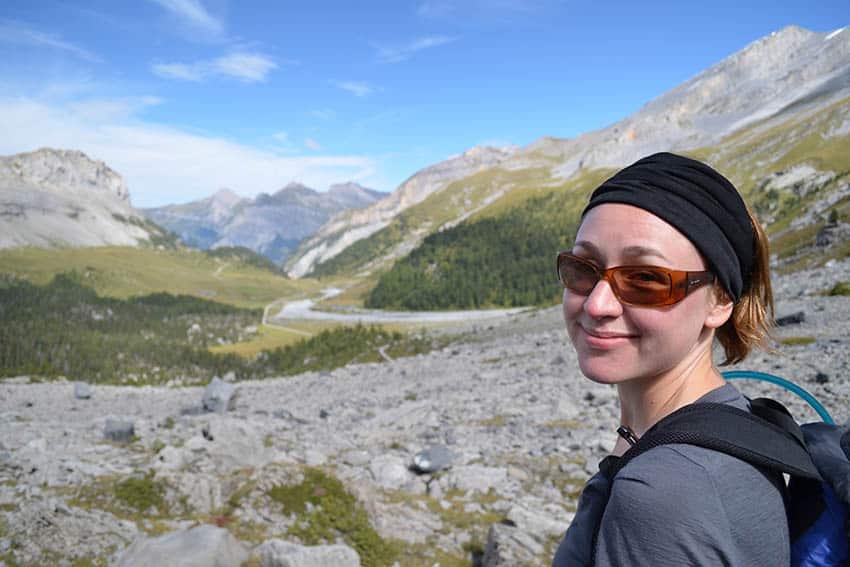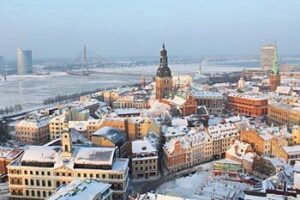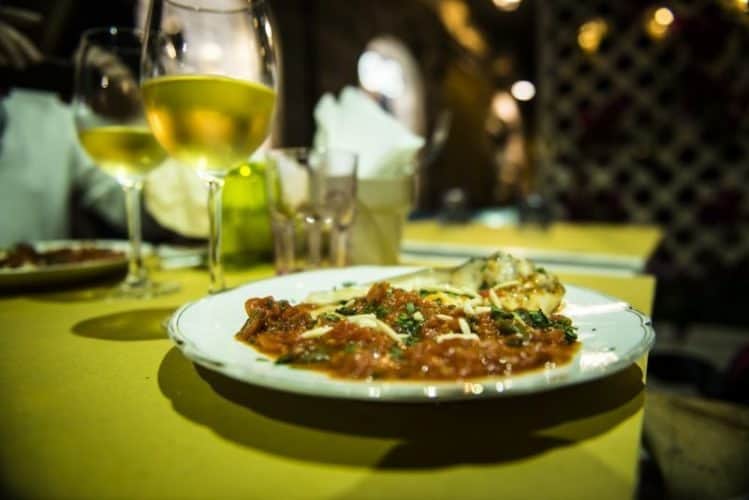
The uniqueness of Sicily holds it above other Italian areas, in many people’s view
By Marley Henderson
From Palermo to Castiglione di Sicilia to Alimena, secrets are hidden along the walls of the villages. As Sicily sets itself free from the Mafia, it is now welcoming visitors with open arms in ways it has never done before.
Sicilian Splendors: Discovering the Secret Places That Speak to the Heart highlights a traveler’s experience through the new and improved Sicily. The book explores the island’s food, history, politics and locals who the author, John Keahey, encountered in his travels.
Keahey meets villagers who are eager to welcome tourism to their island as well as illustrating the cultural background. He is greeted with meals and drinks as locals walk him through the intricate streets.
The travel memoir navigates and paints images of the islands for readers to virtually transport themselves to the island and experience the true soul of Sicily.
Excerpt from the Book: The Scirocco, too, is a dimension of Sicily
Gianluca is a wise young man, a deep thinker who knows his island’s culture well. As we visited the various sites over a four-hour tour, he spoke at length and profoundly about Sicily. He quickly figured out that while I enjoyed seeing “places” and understanding history, I wanted to dig a bit deeper into the Sicilian soul. He didn’t disappoint.
The Scirocco
“When the scirocco is blowing, people become grumpy, short-tempered,” he said. “When it is too cold, people do not want to work. Also when it is too hot.” This he said with a chuckle. “Of course, they do work, but riposo pomeridiano is very important.” This was his understanding of the culture of his people who are Mediterranean islanders and who do not consider themselves Italian in the familiar sense.
The scirocco, a hot, dust-laden wind from the Libyan deserts that blows across Sicily, Malta, and Italy, has worked over the centuries to silently shape the mindset of these islanders. I once wrote about what the writer Leonardo Sciascia described as “the scirocco room” that can be found in many Sicilian houses. Other than a narrow door, the room had no openings to the outside. Here, a family “would take refuge against the wind.” Sciascia adds this melancholy note: “The scirocco, too, is a dimension of Sicily.”
I can picture family members huddling together in these quiet, windowless places waiting for this dry, hot wind to subside. It pulls them together, strengthens their trust of and loyalty to one another.
In Sicily, families come first, then the village, then the province, and then the region of the island itself. They almost never feel loyalty to the state based in Rome, which almost always, in Sicilians’ view, does nothing for them. Now, in some respects, the European Union does more for them than Rome—but not always.
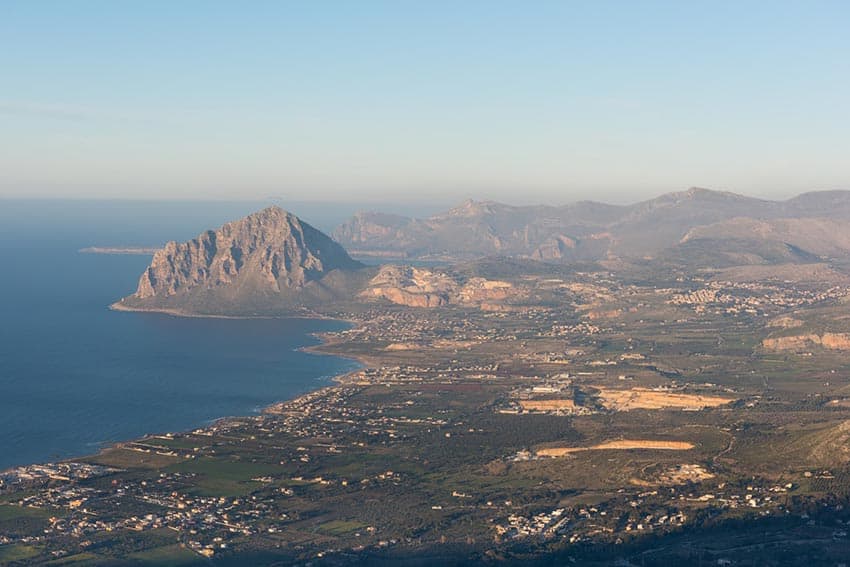
Gianluca continued with his cultural lesson. “The identity of each town is tied to the town’s patrons.” As an example, he said, “The dates of the [religious] festivals are the same, but how each town honors them is unique to that place.” And, he added, dialects of the Sicilian language also tie people together. “We talk the same dialect in our small area: Calatafimi, Vita, Salemi, Alcamo. This, too, ties us together.”
There was a time, I suspect, when someone from a village deep in the interior would venture to a village or a town perhaps a few dozen miles away and feel as if they were in a foreign place. When Italy was unified in 1870, Tuscan Italian, the official language of the new nation, heavily influenced what was spoken on the island. And Mussolini, in the early twentieth century, mandated that teaching and speaking Italian was obligatory for all schools. Despite these century-old pressures, village dialects remain.
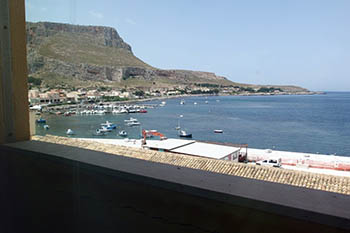
I have a Sicilyborn friend who told me that when he went to his ancestral village in the early 1960s, people from one side of that place spoke a dialect different from that of people from the other side. This today, is gone. But dialectic phrases, mingled with formal Italian words, still exist, sort of a “protoSicilian,” meaning the language is evolving. An Italian speaker from the north of Italy can easily communicate with people in the far south in this modern age of universal education, but if those folks shift into their local dialect, that visitor would be lost.
For his part, Gianluca was pleased when I told him what my friend George had told me in Caccamo about how Sicilians, once closed to outsiders, are beginning to open up. This was something I had seen happen most dramatically from my first visit in 1986 to now.
“They are opening to foreigners,” Gianluca confirmed. “And it is not only to encourage tourism. They understand their culture is not just Mafia. Tourists can change the characteristics of our [once closed] culture. If one hundred people a day come to see the landscapes that we have always taken for granted, this will slowly begin to change us by opening us up. A worker on the land can only see the economic side of that landscape; a tourist can see the beauty, and this changes us. Tourism is our future.”
Shaking Loose the Mafia
Shaking loose from the Mafia stereotype has been difficult for these islanders, who know it is still there, under the surface. And they know who its members are. The elderly men sitting on benches in countless villages in the sunshine can pick them out as they walk across the town square. Only once did someone point out a Mafia capo to me.
He had been sitting across from me in a tiny barbershop in a rough-and-tumble Palermo neighbor hood—a portly middle-aged man with a week’s stubble, wearing a tightfitting, stained polo shirt, looking nothing like anyone in The Godfather. Everyone who entered the shop greeted him with kisses on both lightly whiskered cheeks. He paid no attention to me, a stranger who was simply waiting his turn for a haircut.
I told Gianluca this story and he told me the Greek myth of the Medusa as a way to characterize how good can transform into evil and back to good again. “From the blood of Medusa is born Pegasus, the winged horse,” he began. “From something so horrible can be born something beautiful.” Medusa was once beautiful, but vain, and because of a personal slight, Athena turned her into a horrible creature with hair of writhing snakes, and if someone looked at her they would turn into stone. One version of the myth says that when Perseus beheaded her, the blood from her severed neck created the beautiful Pegasus.

Gianluca told me these things while we sat at an outside table at Salvatore Cudia’s house far out in the countryside in the Contrada Barchetta, perhaps five miles from Calatafimi, Segesta’s historical center. Salvatore, who served us wonderful espresso, calls his place Casale Cudia. It sits on a hillside with a wonderful view far out into the interior showing wide-open agricultural land and few houses.
We had finished our tour by driving around that village center and now my guide and new friend described how the village of more than six thousand Calatafimese is actually arrayed over three hills: Monte Tre Croci, or Mountain of Three Crosses; Monte del Castello, where the partially restored castle sits and its slopes make up the historical center; and Monte San Vito.
The Saracens first settled on the hill, calling the village Qal ‘at Fimī, meaning Eufemio’s Fort. There are thirty churches in this small village, including one—the Sanctuary of Santissima Maria of Giubino—that sits on the top of Monte Tre Croci.
Priests hold services there only from June to September, when parishioners shift from a church in the village center to this country church about three miles away. When they make the shift, they walk the three miles in a procession carrying their beloved saint, a copatron of the town. In September, they walk back, holding their saint high on men’s shoulders.
About the Author
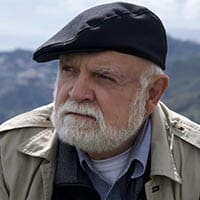 John Keahey is a retired award-winning newspaper reporter/editor, based in Salt Lake City. A native of Idaho and graduate of the University of Utah, he graduated with degrees in history and marketing. Keahey first visited Sicily in 1986 and ever since has continued to return in between writing other travel narratives.
John Keahey is a retired award-winning newspaper reporter/editor, based in Salt Lake City. A native of Idaho and graduate of the University of Utah, he graduated with degrees in history and marketing. Keahey first visited Sicily in 1986 and ever since has continued to return in between writing other travel narratives.
The subjects of his books range from southern Italy to Venice, to western Tuscany, covering ancient ruins, unique food, the beautiful countryside, and the warm and friendly people. Keahey’s other travel narratives include: “Seeking Sicily: A Cultural Journey Through Myth and Reality in the Heart of the Mediterranean,” “A Sweet and Glorious Land: Revisiting the Ionian Sea,” and “Venice Against the Sea: A City Besieged.”
Excerpted from SICILIAN SPLENDORS: Discovering the Secret Places that Speak to the Heart by John Keahey. Copyright © 2018 by the author and reprinted by permission of Thomas Dunne Books, an imprint of St. Martin’s Press.
- MGM Springfield: More Than Just A Casino - April 3, 2019
- Seeing Dublin on Two Feet - January 28, 2019
- The Chicago Riverfront is a Must-See - January 10, 2019


